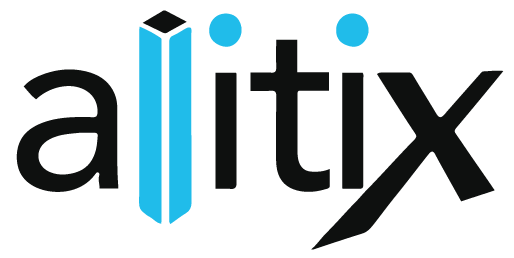The cost of SAP vs Anaplan Implementation
By Jon Pause
I was well-connected in the BPC community.
I knew many partner firm CEOs, BPC practice leads and extremely intelligent planners.
When Anaplan came onto the stage and everyone was evaluating its capabilities, one consistent concern I heard was, “With the shorter projects, how are you supposed to keep your teams busy?”
The cost of acquisition did not support project durations coming out of Anaplan. This struck me as odd.
First and foremost, this was an acknowledgement of the fact that Anaplan was faster and easier to deploy. In hindsight, it also reveals the tunnel vision within BPC practices: Faster implementation cycles don’t lead to fewer hours; they lead to more use cases.
Maybe that’s where the BPC value proposition broke apart?
In comparison: BPC vs Anaplan
Here are my high-level takeaways comparing the implementations of BPC and Anaplan:
There are projects in BPC that could be done better in Anaplan.
There are levels of detail and flexibility in Anaplan not supported by BPC.
Use cases in Anaplan are shorter and more engaging.
Businesses can leverage the shorter development cycles to do more use cases.
Data issues are still a major factor in project success. Bad data in means bad data out. But Anaplan enables visibility into data faster. It allows issues in the data to be found and solved much more quickly. In many ways Anaplan makes dealing with comparable faulty data sets easier because of the flexibility it affords.
Projects require less-specialized resources. A majority of the resources can be shifted to frontend development instead of backend integration or business logic.
Anaplan’s training department is far superior to SAP’s.
The Anaplan Way delivery methodology cultivates a nimble organization.
I have been watching Anaplan grow for 6 years. I continue to be excited for what this platform can do. The product enhancements appear to improve rapidly compared to other options.
Flexibility as a KPI
No matter what your licensing agreement with BPC is, you have likely spent a significant amount of money on implementations to tailor BPC to your needs. These figures were likely astronomical.
An inflexible architecture leads to unnecessarily difficult processes and deliverables within BPC. And finding solutions for critical path items requires complex workarounds that probably cost you extra. Plus the development and maintenance of those workarounds requires specialized resources which come at a premium. In the grand scheme, you poured money into BPC beyond your license costs. In doing so, you were never flexible enough to improve process or bring in outlier processes.
Sharing an Uber last week with a consultant who had switched from BPC to Anaplan over the last year, he mentioned that he was “told that “Anaplan was harder to implement and cost more.”
I was taken back slightly. We had both worked on multiple headcount projects in both spaces. So instead of responding in disbelief I simply asked “How long did your last headcount project take in BPC?”
His answer: 4-6 months.
“And how long have your two headcount projects in Anaplan taken?”
His Answer: 4-6 weeks.
“Given the nature of hourly rates, which one cost more? Which one was easier?” I asked. His smirk acknowledged the “aha” moment.
Anaplan lowers your cost of implementation. Anaplan decreases your overall time to value and has the flexibility to take on planning projects out of reach in BPC.
Breaking the old and adapting to the new
As mentioned, it’s easier and faster to build within Anaplan. It has the flexibility to tackle bite-sized chunks which can foster a culture of continuous improvement.
But let me caution against driving the size and scope of a project down.
Anaplan allows you to rethink your business process. You have access to supporting data far beyond the planning capabilities you are accustomed to, so invest wisely.
Follow the Anaplan Way’s guide to successful project implementation.
The 4 pillars of Anaplan Way
The Anaplan Way suggests there are four pillars to any project: Data, Process, Modeling and Deployment. In fact, the projects that yield the best results spend 70% of time and resources devoted to the Process and Data pillars. Modeling comes in at 17%, followed by deployment at 13%.
Don’t make the mistake of just uploading your existing spreadsheets into the Anaplan platform. Instead, harness your platform’s full potential by spending time on process.
Ask these questions:
What information would make a difference in my business process?
How do strategic initiatives relate to your business processes?
What KPIs are you measuring to evaluate success on those initiatives?
What peripheral or related processes are still housed in an external spreadsheet?
Do you have one-off planning systems that are expensive or inefficient?
Do you have any major business disruption events on the horizon?
Anaplan is finally delivering on the promise of flipping the 80/20 paradigm of time spent aggregating data vs analyzing data. These insights help optimize end-user clicks, taking them directly to the portion of the plan that needs attention.
Allitix is your Anaplan Partner. We can help guide you through the process of unlocking value, allowing you to maximize ROI during your first Anaplan implementation.
About the Author
Jon has been working on advancing connected planning for over 15 years. Previously a solution architect in the SAP EPM space, Jon brought both industry insights and delivery experience to the Anaplan platform.
He is a connected planning specialist who has demonstrated the ability to adapt software tools to multiple industries, technology platforms, and business needs. Using a combination of technical knowhow, creativity in adapting cutting edge software capabilities, and the understanding that business process is a key ingredient to success Jon consistently delivers “value‐add” projects for his clients.

